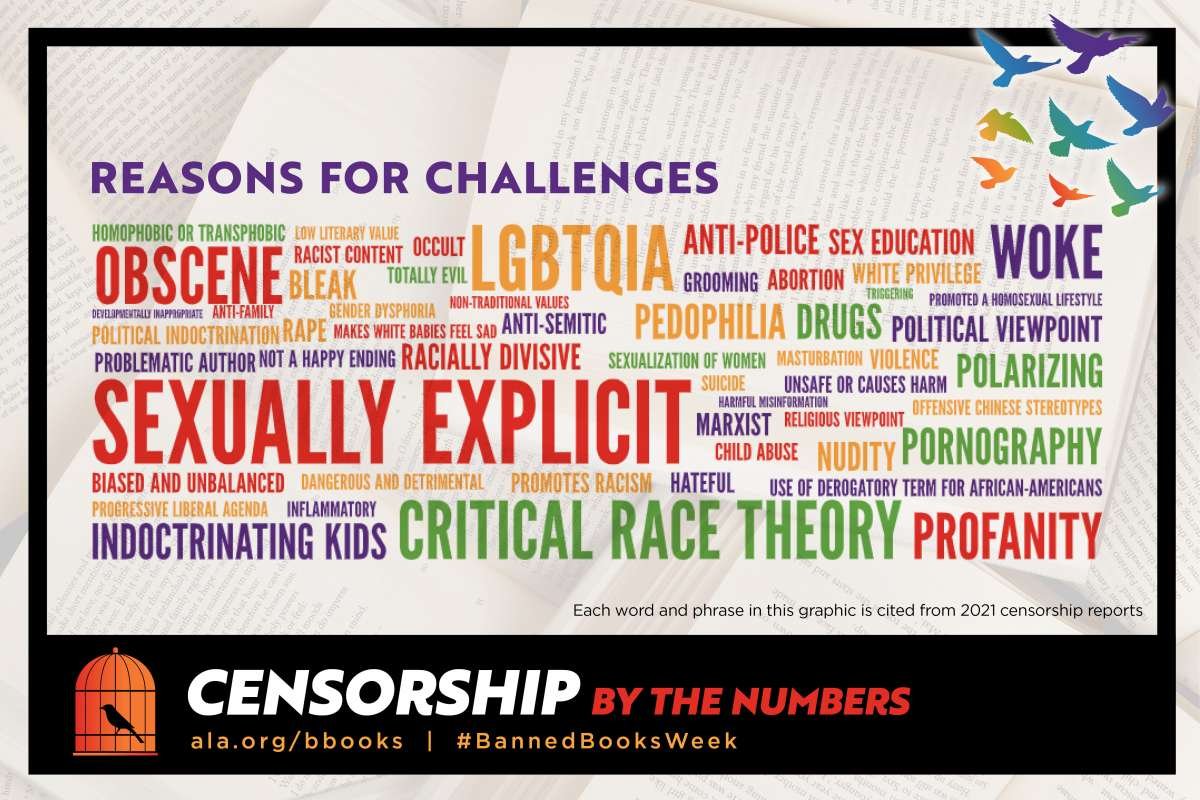*If you feel like you're missing a day, yesterday I did a Throwback Thursday with my review of Out of Darkness.
Ray Bradbury, writing Fahrenheit 451: You shouldn't ban books.
1950's parents: Let's ban this book!
That seems to be how it goes, doesn't it?
As some of you know, last year I challenged myself to read a classic banned book that I hadn't read before, and review it for banned books week. I decided to do the same this year and, due in large part to nearly unanimous response from my readers, I read Ray Bradbury's Fahrenheit 451. (F-451, from here on out because I'm lazy.)
I wasn't sure what to expect going into it. I read it without looking up why it had been challenged. I had attempted to read a collection of his short stories a while ago and had not been impressed.
I was very pleasantly surprised with F-451. The language was BEAUTIFUL. The book was written by someone who obviously loved words, about someone who would come to better appreciate words. I haven't read a book with language like that since The Book Thief.
The world was also very well created - it felt very Twilight Zone-y, and I mean that in the best possible way. Of course, it didn't long pre-date the show, and Bradbury's work was used in an episode (and I think also inspired others). For me, there was a very clear atmosphere and color scheme.
What struck me the most, though, was how well a story written in 1953 captured the ennui and lack of attention span of 2022. In F-451, the main character's wife has speakers called seashells that she wears in her ears constantly - they are described as being silver and thimble-sized. She is constantly listening to radio shows, constantly watching her "parlor family," the unending broadcast of TV on the three walls of a room in their house. And that's not enough - she wants to be so immersed in the fictional television world that she asks Guy to buy her a fourth TV wall, even though it would cost about a third of his annual salary.
Honestly, the above is even just a small sample of how far gone most of society has gotten. They listen to their seashells and watch their parlor families unceasingly. The neighbor girl relates how she's constantly losing friends to car crashes - in this society people are so aching for stimulation that they speed and crash as casually as my husband might play a video game.
Of course, the one way in which the population of this world is not allowed to find stimulation is through reading. Books are illegal. Possession of even one will get you arrested. Neighbors report neighbors and the firemen come to burn not only the books but the perpetrator's home.
Guy is one of these firemen, but things take a turn for him in part because of his observant young neighbor's joie de vivre and because a woman's whose book collection they were about to burn gets the jump on Guy and his colleagues and sets both the books and herself on fire in a final desperate attempt to take at least that small act from them.
Guy finally comes to understand that he no longer believes in burning books, that he hates this world he lives in where no one sees, no one feels, no one connects. He starts saving books, but of course is found out. Long story short, he escapes the city and joins a group of "hobos" - who turn out to be "retired*" professors and a minister. They promise to teach Guy a technique they developed to remember the entirety of any book they've ever read. These men are the new library; they promise to pass down their collective knowledge until the world is ready for the books to return.
*Most are strongly hinted to have been driven out of their professions.
Not finding anything too bothersome in the book, I looked up the reasons it was challenged after I was done. Of course, profanity (as always) was at the top of the list... and yeah, maybe for the 1950's it might have been a tad strong, but it wasn't constant, and I feel like there wasn't much worse in there than "damn." Violence was also a complaint, as was a description of the Bible being burnt. (But, wasn't that the point? That Bradbury was CONDEMNING violence and book burning, not condoning them?) Other complaints included mentions of both suicide and abortion. Granted, once again, these came off as very tame to my 21st century sensibilities. The attempted suicide is accompanied by blase technicians who pump the would-be victim's stomach with less interest than a mechanic repairing a car. Abortion is mentioned in passing as Guy hurls accusations of unfeelingness at his wife's friends, one of whom who has had multiple divorces and abortions. And, let's be perfectly honest - a lot of those complaints would either go over younger teens' heads, or be completely unimpressive to older teens today.
All in all though, a really great book. Try reading it instead of burning it.



















